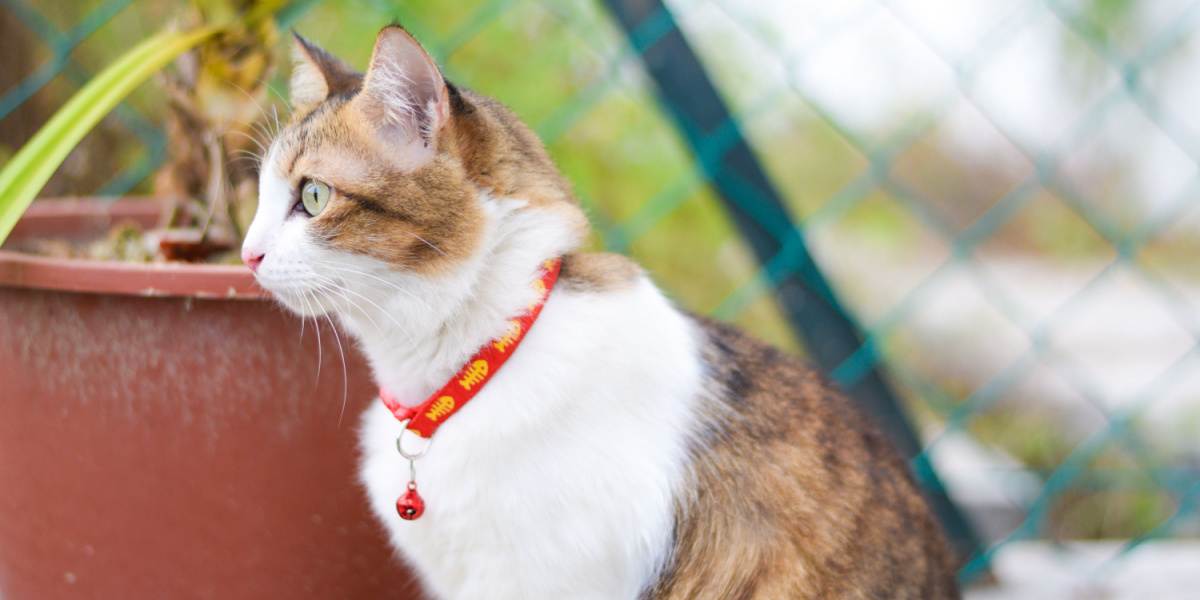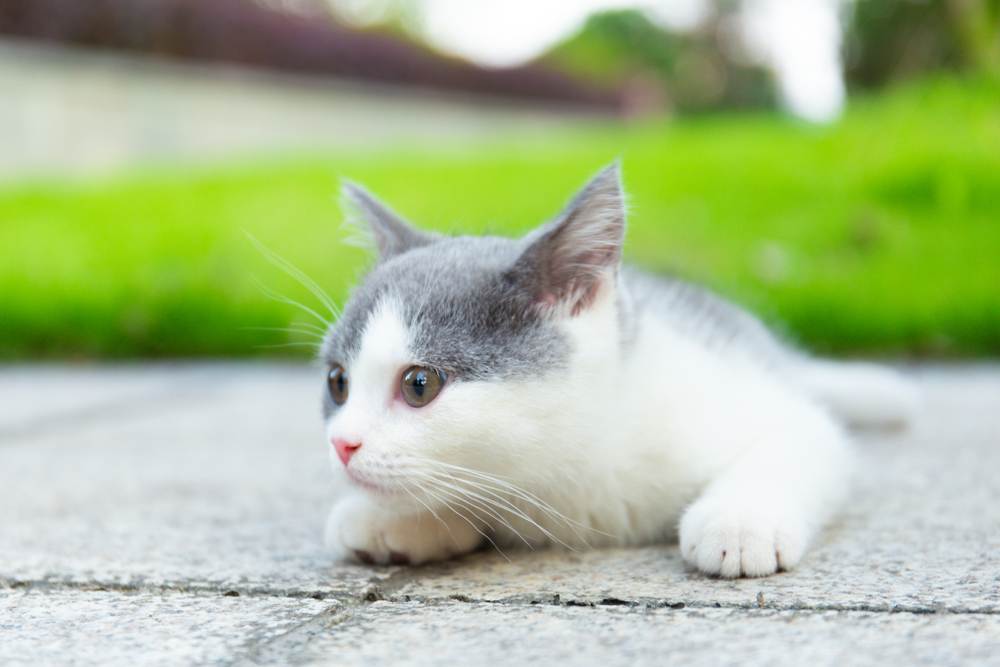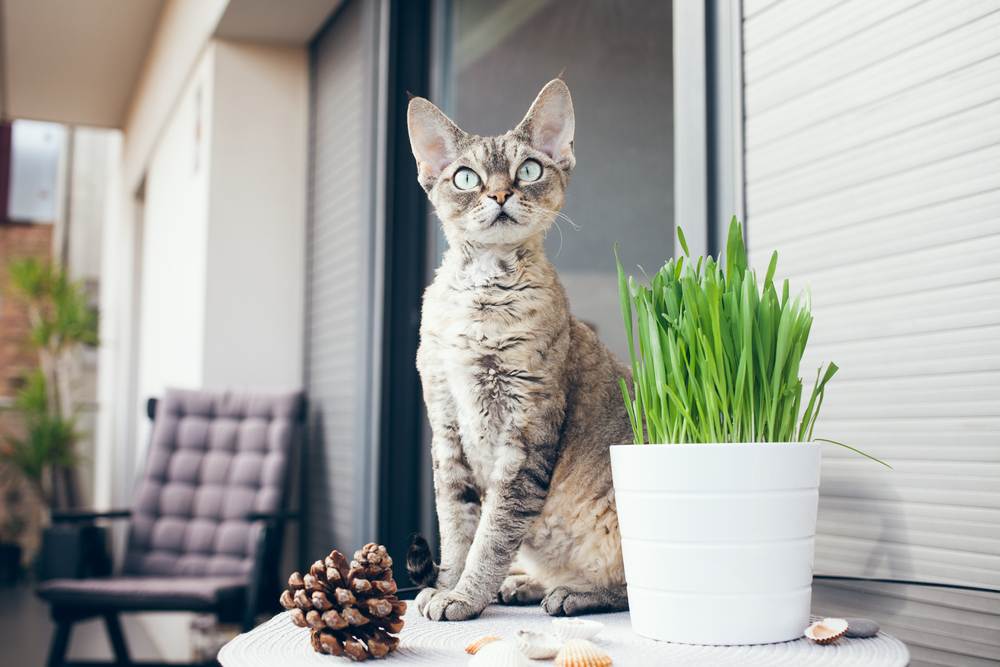
Cats’ eyes, just like ours, have a pupil and an iris (the colored bit), a lens inside, and a retina at the back of each eye. They also have rods and cones, which are the photoreceptor cells that pick up the light stimuli and signal to the brain to form an image.
Cats don't have detailed long-distance vision – their vision becomes blurry after about six meters (20 feet).
Cats don’t see colors as brightly as we do, and they can’t differentiate red from green.
Cats are most active at times of low light, and this is reflected in the fact that their night vision is excellent.Key Takeaways
However, there are some substantial differences between cat eyes and human eyes – for instance, cats’ eyes have more of an almond shape and they have elliptical pupils that may appear as slits, depending on their mood and whether it’s dark or light outside. But is a cat’s vision as good as a human’s? Let’s find out some facts about cats’ eyesight.
10 Facts About a Cat’s Vision
1. Cats Can’t See Clearly at Long-Distances
It might surprise you that cats can’t actually see as far as humans can, at least not in any detail. After a distance of about six meters (20 feet), a cat’s vision becomes blurred. This is in comparison to humans, who can usually see clearly to up to 60 meters or more (200 feet plus).
You might think that six meters is not far enough to be useful, but a cat’s vision is perfectly suited to hunting, stalking, and pouncing on small prey and keeping themselves safe from any nearby threats. Besides, they have other means of assessing their surroundings and wider environment (more on that later!).
2. They See Best in Low Light
A cat’s vision is best suited to low light or darkness, meaning cats can see best at nighttime, dawn, and dusk. This works well, because cats are naturally most active at dawn and dusk, doing most of their hunting under the cover of darkness when nocturnal wildlife are on the move.
3. Cats Have a Narrow Range of Vision
It’s not just long distances that cats struggle with – their close-up vision isn’t particularly good either. This is because the muscles that control the shape and size of their pupils can’t focus the light onto the back of the eye at too close a distance. This means that cats can see the sharpest details at a distance of around to six meters – which is perfect for chasing mice or stalking a toy.
4. They Use Their Whiskers to ‘See’

Cats don’t just use their eyes to navigate – their whiskers are a kind of ‘second vision’ which help them understand their close environment.
So, if your cat can’t see very well close up, why is it that they don’t bump into things more often? Have you ever seen your cat race down the garden and through a tiny hole in the fence without hesitation? Or perhaps you’re always impressed by how agile they are as they slip through the cat flap with ease? Surely cats couldn’t do these things if their short-distance vision was blurry?
Thankfully, cats have whiskers to help keep them fully in tune and aware of their surroundings. These special hairs will tell them how wide a gap is and whether they’re able to squeeze through, but they’ll also pick up subtle vibrations and help them balance.
5. Cats Don’t See Color as Well as Humans Do
There are two types of photoreceptor cells, known as rod cells and cone cells, and cats and humans have both. These are the receptors that detect light at the back of the eye and send visual signals to the brain. Rods are best for seeing in low light on a black/grey spectrum, while cones are vital for seeing in color.
The proportion of rods and cones varies between cats and humans – compared to humans, cats don’t have many cone receptors but they have a lot more rods. This means that they don’t see vivid colors, but see much better in the dark than we do.
So, we know that cats don’t see the bright colors that we do, but did you know that they are technically color-blind? That’s right, cats don’t see a full range of colors and can’t tell the difference between the colors red and green, which is also the case for some people.
6. They Have Better Peripheral Vision Than Humans Do
Have you ever thought about how your cat’s face is different from yours? A cat’s eyes are slightly angled outwards, whereas a human’s are flat on the front of their face. This subtle difference means that cats have a much wider field of vision than we do. In fact, a cat’s visual field is around 200 degrees, while a human’s is up to 180 degrees.
7. Cats Are Great at Following Moving Objects
Cats are great at spotting and following objects that are moving really fast. Whether it’s a mouse scampering away in the garden, the light reflecting off your watch, or a fly buzzing around the room, your cat can stay focused on it no matter how fast it is. As instinctive hunters of small prey, it’s easy to see how they would develop this quality to help them keep up with their targets.
8. They Use Their Other Senses to Complement Their Vision

Cats’ eyesight is well adapted to their needs, but they also have a very good sense of smell and hearing to fill any visual deficits.
A cat’s vision isn’t perfect – there are things they can see much better than humans can, but there are also things they can’t. Luckily, cats use their other senses to fill in the gaps in the information about their environment.
Their senses of smell and hearing are very sensitive, meaning they can detect noises that are quieter and smells that are further away, compared to humans. These senses help to provide the full picture so that your cat can stay safe and move around confidently.
9. Cats Have a Tapetum Lucidum
The tapetum lucidum is a layer of tissue that sits behind the retina at the back of the eye. It acts as a “retro-reflector”, reflecting the light onto the retina of the eye and giving the light receptors another opportunity to detect the stimuli and generate the image signals.
You might notice that your cat’s eyes reflect light when it’s dark (which is why those reflective panels in the center of the road are called cat’s eyes). This glow from your cat’s eyes isn’t generated by the eye itself, but it’s caused by external light reflecting off the tapetum.
10. They Can’t See What’s Right Under Their Nose
Have you ever offered your cat their favorite treat and found that they didn’t notice it right away, even though it was right under their nose? Cats can’t see under their nose, just like we can’t, so chances are when they did notice the treat it was because they could smell it rather than see it!
Summary
Cats’ eyes look different from ours, and their vision is a little different too. A cat’s vision is perfectly adapted for life as a cat – allowing them to see well in low light and spot fast-moving objects, even in the periphery of their field of vision.
Therefore, your cat’s eye health is really important, so make sure you take them to the vets if you’ve got any concerns. You can find some common cat eye problems in our article Why is my Cat’s Eye Swollen?
Related Conditions/Topics:
- Retinal Detachment In Cats: Causes, Treatment and Recovery
- Cataracts In Cats: Causes, Symptoms, & Treatment
- Eye Diseases In Neonatal Kittens: Causes, Symptoms, & Treatment
Frequently Asked Questions
What does a cat’s vision look like?
A cat’s vision is a little different from ours. They don’t see as much color, and their distant and near vision is blurrier. However, their field of vision is wider and they’re much better at following moving objects and at seeing in dim light.
Do cats recognize their owners?
Cats recognize their owners, but not just by sight. Your cat will also recognize your smell and the sound of your voice and movements, meaning they know you’re there long before they see you.
How do cats see humans in the dark?
Cat’s eyes are adapted to see well in the dark. They have more rod cells at the back of their eye, which pick up shades of black and grey rather than color. This allows them to see better in the dark than humans can.







